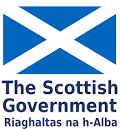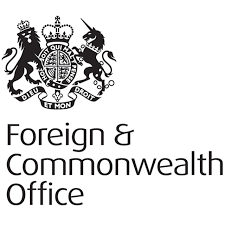PRESS RELEASE : Scottish Health Survey 2021 published [November 2022]
The press release issued by the Scottish Government on 8 November 2022.
Scotland’s Chief Statistician released The Scottish Health Survey 2021 today. This publication provides information on the health of adults and children in Scotland.
The average level of mental wellbeing amongst adults has declined. The average Warwick-Edinburgh Mental Wellbeing Scale (WEMWBS) score was significantly lower in 2021 than in 2019 (48.6 and 49.8 respectively). This followed a decade in which levels had remained fairly constant. Over one in five adults (22%) had a GHQ-12 score of four or more (indicating a possible psychiatric disorder). This is an increase from between 17% and 19% in the years 2017 to 2019.
Five per cent of adults reported having long COVID. Prevalence was highest amongst those aged 35-64 (6-7%). One per cent of adults reported that long COVID limited their activities a lot. The most common symptom reported was ‘weakness / tiredness’, with 63% of those with long COVID reporting this. The next most common symptoms were ‘shortness of breath’ (43%), ‘trouble sleeping’ (37%), ‘loss of smell’ (34%), ‘headache’ (31%), ‘difficulty concentrating’ (29%) and ‘worry / anxiety’ (27%).
Three percent of adults reported ever having a problem with drugs. Twelve per cent of adults reported using drugs in the previous 12 months. Prevalence was highest amongst those aged 16-24 (22%). Mental wellbeing for adults who had used any drug in the last 12 months was significantly lower than for those who had not (WEMWBS mean scores of 45.4 and 49.1 respectively).
Almost one in ten adults (9%) reported having experienced food insecurity
in terms of having worried that they would run out of food due to lack of money or resources during the previous 12 months. This was the same proportion as in 2019. Prevalence of food insecurity was highest for single parents and single adults aged under 65 living alone (34% and 19% respectively in 2019/2021 combined).
Prevalence of smoking amongst adults continued to fall to 11% in 2021, down from 28% in 2003. Rates continued to be much higher in the most deprived areas (24%) compared to the least deprived areas (5%). The proportion of children exposed to second-hand smoke in their home (2%) was significantly lower than in previous years (12% in 2012).
More adults (69%) met the moderate or vigorous physical activity guidelines than in previous years. This continued the general upwards trend since 2012 (62%).
Other key findings from the report show that in 2021:
- Almost half of adults (47%) reported living with a long-term condition, the same proportion as is 2019. Just over a third of adults (34%) said they had a long-term condition which limited their day-to-day activities.
- Sixteen per cent of adults had any cardiovascular condition. Six per cent had doctor diagnosed diabetes, 5% had ischaemic heart disease and 3% had had a stroke.
- Almost two thirds of adults (61%) reported ever attending cardiopulmonary resuscitation (CPR) training.
- Prevalence of hazardous or harmful weekly alcohol consumption has reduced from 34% in 2003 to 23% in 2021. Nine per cent of adults reported ever having had a problem with alcohol, with 1% saying they still had a problem.
- Five per cent of adults were current e-cigarette users, a reduction from 7% each year between 2015 and 2019.
- Thirty per cent of adults were living with obesity. This was similar to or marginally higher than rates in each year since 2008 (ranging from 27% to 29%).
- Around one in five of all adults consumed five or more portions of fruit and vegetables a day (22%). This was similar to levels since 2003 (21% in 2003).
- One in five children (20%) aged 2 to 15 met the five-a-day recommendation for consumption of fruit and vegetables. This was significantly higher than in the years 2008 to 2019.
- Almost half of all adults (48%) met the Scottish Dietary goal to reduce total fat intake to no more than 35% of food energy. Around one in five adults (22%) met the Scottish Dietary Goal for free sugars intake to not exceed 5% of total energy.
- Almost six in ten adults (58%) undertook any gambling This has decreased significantly since 2012 (70%). Prevalence of adult gambling activity excluding the National Lottery has changed to a lesser extent (43% in 2021 compared to 45% in 2012). Online gambling participation has doubled since 2012 (from 7% to 14%).
- The proportion of adults who reported having at least one accident in the previous 12 months has not changed since 2015 (10%).
The figures released today were produced in accordance with professional standards set out in the Code of Practice for Official Statistics.


